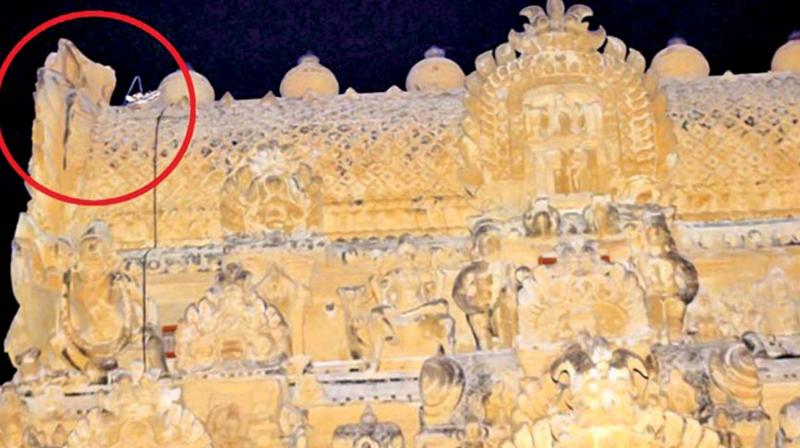Damage caused to gopuram not severe

Thanjavur: Officials of the Archaeological Survey of India (ASI) inspected on Wednesday, the Keralanadhagan gopuram at the entrance of the Big Temple here to assess the damage caused to the rear portion of the yaazhi in the gopuram which was struck by lightning due to heavy rain on Tuesday evening.
ASI officials told Deccan Chronicle that damage was not heavy due to the presence of a shock absorber on the gopuram. “We are sending a report to the Central Public Works Department (CPWD) which normally takes up repair works due to such damages to the temple.”
Professors and students of civil and electrical departments of Sastra deemed university also inspected the damage. They had also checked in the past when such damage had occurred. “Sastra university professors and students told us that there was no problem in the earth wire given to the shock absorbers and these are intact. So CPWD engineers have to visit and take a decision on repair,” said ASI officials.
The damaged portion was made of brick. The Keralanadhagan gopuram is the first gopuram at the entrance of the temple. It got its name as King Raja Raja Cholan went to Kerala (that time Chera naadu) and conquered it. To mark the victory, the gopuram was named as Keralanadhagan gopuram.
HR and CE officials said that only after repair is done will pujas be performed. The ASI has taken up various works in view of the mahakumbabishekam to the temple which will be done after the ASI completes its work.
Saravana Rajmohan, associate dean of Sastra deemed university, Raghuramekambaram, Professor of School of Civil Engineering of the University, and R.Rajesh, assistant professor of EEE department of the University who investigated the Keralanadhagan gopuram told DC that lightning passed to the earth by the lightning diverter on the gopuram. Some mechanical forces could have developed which damaged the brick structure on the rear of the yaazhi. The structure (gopuram) is stable and both the kalasams and foundation are intact. Minor repair is sufficient, the team felt, but said that their investigation reveals how damage could occur after lighting is diverted.

